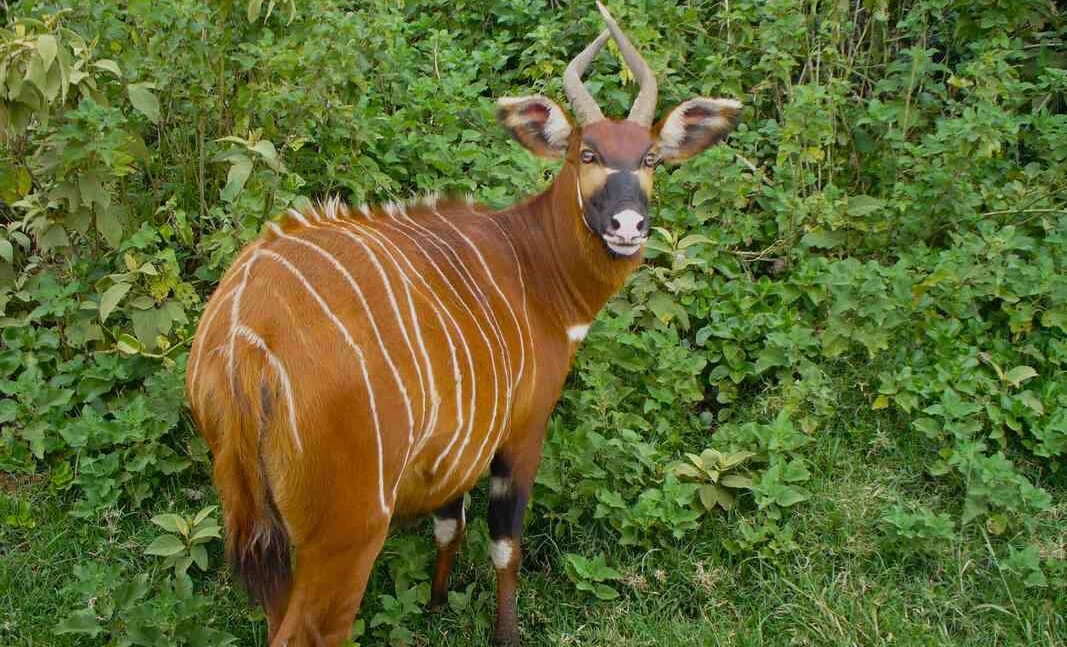The struggle to keep one of the world’s largest and rarest antelope species alive has taken a massive step forward in Kenya.
17 mountain bongos have been flown to Kenya from the Rare Species Conservation Center in Florida for eventual reintroduction into their natural habitat.
A subspecies of bongo, the largest of the forest-dwelling antelope, the eastern, or mountain bongo, numbers less than 100 individuals, and is listed by the IUCN as Critically-Endangered. More survive today in zoos than in the wild.
The history of the animal is an interesting one, as it’s believed to have become a forest species when climate change turned savannah areas into forests thousands of years ago. In the case of the mountain bongo, their home range is located in southern Kenya, on the slopes of Mount Kenya National Park and in the surrounding woodland.
They are the world’s third-largest antelope species behind the giant eland and common eland.
Tourism Minister Rebecca Miano described the arrival of the bongos at the country’s main airport on Sunday night as “emotional and so cool.”
The animals will first be kept in an acclimation center run by the Kenyan Wildlife Service (KWS) that will protect them while they re-hone their instincts for wild living.
Within three months, the BBC reports, the KWS will be welcoming another shipment of these bongo from captive breeding programs across Europe.
The last time a large shipment of animals like this made it to Kenya was in 2004, when 18 animals arrived safely. They successfully integrated with the wild population, and though some died of tick-borne diseases, it demonstrated that captive animals can successfully make it in the wild if given time and training.
This article by Andy Corbley was first published by The Good News Network on 26 February 2025. Lead Image: Female mountain bongo (Tragelaphus eurycerus isaaci) photographed at Mount Kenya National Park – credit: released into the public domain by Chuck upd.
What you can do
Help to save wildlife by donating as little as $1. Choose what it will be used for:
forests, oceans, wildlife or climate.
Our conservation partners spend at least 80 percent of the money they raise on actual fieldwork, rather than administration and fundraising.

 Donate
Donate
Leave a Reply